Exploring The Main Islands Of Hawaii
The beauty of Hawaii is unbelievable! This cluster of islands is one of the most stunning places on Earth. It has breathtaking beaches and lush rainforests: It’s paradise. If you want an unforgettable adventure with your friends or family, exploring these different islands of Hawaii should be at the top of your list!
The Hawaiian archipelago has something special in store for every kind of traveler. With so much history, culture, and beauty packed into such a small area, it’s no wonder why people come back time and again to explore this amazing part of our world.
From snorkeling off Oahu’s shores to camping beneath Maui’s stars – each island offers something unique and captivating. In this part of our Hawaii travel guide, we’ll take you on a journey through the seven main islands: Oahu, Maui, Kauai, Molokai, Lanai, Niihau, Kahoolawe, discovering their secrets as we go along!
An Overview of Hawaii Islands Geography, Ecology and Environment

Hawaii’s eight main islands offer incredible physical features, coastal towns, and native plants. From the lush tropical forests of Kauai to the moon-like terrain of Hawaii Island, aka “the Big Island,” there are endless opportunities for exploration.
Topography
The Hawaiian archipelago is located 2,000 miles southwest of the United States, making it the only U.S. state not in North America. It consists of 130 small rocks and islets, the tallest being Mauna Kea standing at a majestic 13,796 feet.
Geology
The Hawaiian islands were formed over many years by volcanic activity from a stationary hotspot, which continues to create new volcanoes. In 1790, Kilauea had the deadliest eruption ever recorded in U.S. history, and earthquakes and tsunamis are caused by slope instability.
Flora and Fauna
The Hawaiian islands are isolated from other land habitats, leading to more endangered species than any other U.S. state. Brighamia plants, for example, need to be pollinated by hand. Trade winds, horticultural practices, and remarkable biodiversity shape the terrestrial ecology.
Protected Areas
The Hawaiian government has established several protected areas, including Haleakala National Park, Hawaii Volcanoes National Park, Kalaupapa National Historical Park, Kaloko-Honokohau National Historical Park, Pu’uhonua O Honaunau National Historical Park, Ala Kahakai National Historic Trail, USS Arizona Memorial, and Papahanaumokuakea Marine National Monument.
Climate
The islands are affected by the trade winds from the east, with summer highs of 88 °F (31 °C) and winter day temperatures of 83 °F (28 °C). Snow is common on Mauna Kea and Mauna Loa, while Mount Waialeale receives an impressive 460 inches (12,000 mm) of rainfall each year. The dry season is from May to October, with the warmest temperature of 100 °F (38 °C) and the coldest of 12 °F (-11 °C).
Environmental Issues
Military activity has caused extensive environmental degradation, leaving unexploded ordnance and hazardous waste sites. Plantations require large amounts of water, leading to the plastic pollution of Kamilo beach. Invasive species and chemical and pathogenic runoff are other issues that need to be addressed.
Each island has something unique to offer visitors; Oahu is known worldwide as a travel destination with its bustling city of Honolulu and Waikiki beach. Maui offers stunning views from Haleakala National Park and Molokini Crater snorkeling activities that attract people from around the globe. Lanai has some great beaches and resorts, offering camping on Munro Trail or hiking down Polihua Beach.
The smaller islands like Niihau, Kahoolawe, Lana’i, and Molokai provide more remote experiences away from the hustle and bustle of tourist crowds.
There will undoubtedly be something special waiting on each Hawaiian Islands; whether it’s adventure or relaxation you seek – Hawaii awaits!
Oahu

As we venture from Hawaii’s general geography and environment to a more focused view, let’s take an up-close look at Oahu – home to Honolulu and Waikiki Beach. It is like coming into port aboard a cruise ship; you can feel the energy radiating off this island as soon as you arrive.
Oahu is the third-largest Hawaiian island, and the state capital of Honolulu sits on the island’s southeast coast.
Oahu’s population is nearly 1 million, accounting for two-thirds of the state’s total. According to the 2020 Census, the island is home to 1,016,508 people, while the state population is around 1,455,271. Most of the island’s population is concentrated in and around the Honolulu urban area, where 81% resides.
The islands’ area is 596.7 square miles or 1,545 square kilometers. The highest elevation is the mountain peak of Ka’ala, which is 4,025 feet or 1226.8 meters.
Oahu is one of eight main islands comprising the Hawaiian archipelago, but it stands out among its sisters. Here, visitors will find world-renowned beaches such as Waikiki Beach and Hanauma Bay to explore while they bask in tropical sunsets on the golden shores of North Shore.
From snorkeling with sea turtles and dolphins to surfing some of the most iconic waves found anywhere in the world, Oahu can offer you a memorable vacation experience!
Maui
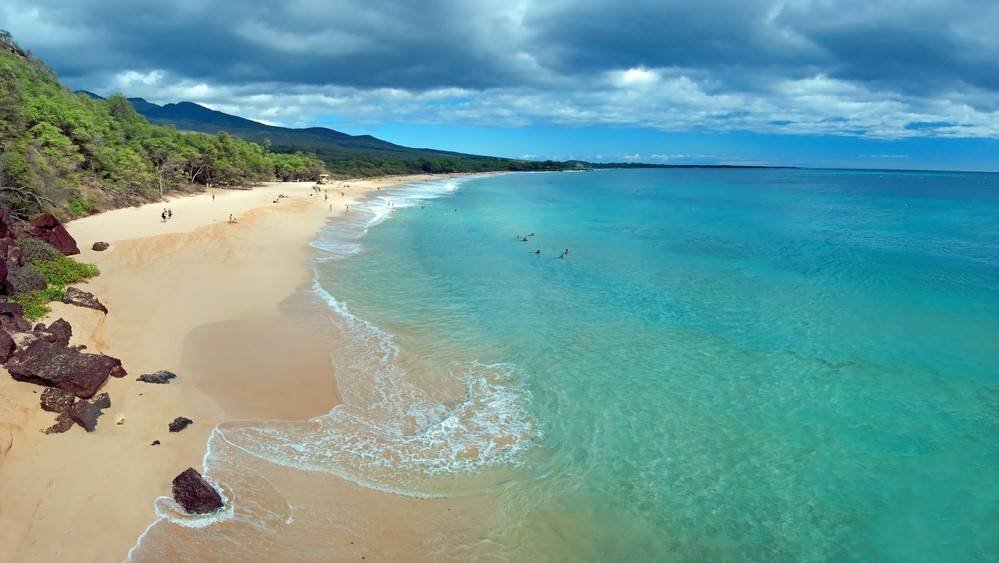
Maui, aka “Valley Isle,” is Hawaii’s second-largest and 17th-largest island in the USA. It is part of Maui County and is a popular tourist destination. It’s home to beautiful beaches, lush tropical forests, and plenty of activities to keep you busy during your stay. A popular activity is a road trip around the island to see stunning sunsets on its west coast beaches.
The island was home to 168,307 residents in 2020, making Maui the third-most populous of the Hawaiian Islands. Its main centers of population include Kahului (26,337), Wailuku (third-largest CDP), and Kihei (second-most-populated CDP). Other noteworthy places on the island include Pukalani, Pāʻia, Kula, Lahaina, Makawao, Haʻikū, and Hāna.
The highest elevation point is Haleakala, reaching a towering 10023 feet or 3055 meters.
Regarding attractions in Maui, there’s no shortage of things to do. For nature lovers, Haleakala National Park provides an opportunity to explore mountains and volcanoes and unique flora and fauna. Or take a tour through Iao Valley State Park – famous for its picturesque riverbed that winds between tall cliffs. If you’re looking for beach time, head out to Kaanapali Beach – one of Hawaii’s best spots for swimming or snorkeling!
Accommodations range from cozy bed and breakfasts along the coastline to luxurious resorts with full-service spas near the beach. Plenty of family-friendly hotels offer everything from pools and playgrounds to kid-friendly menus at their restaurants.
Kauai
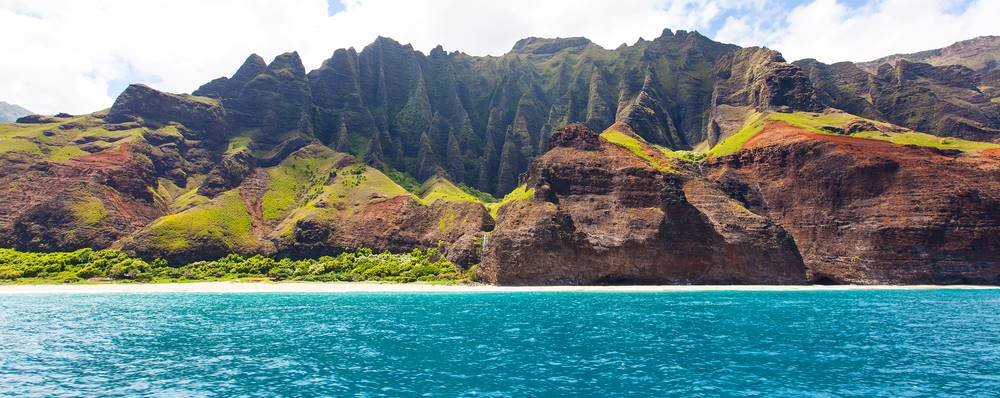
After the lush forests and stunning beaches of Maui, Kauai is a magical paradise waiting to be explored.
Kauai is an island with a unique history and geography. It is the second oldest main Hawaiian Island and covers 562.3 square miles (1,456.4 square kilometers). It is the 21st-largest island in the United States, located approximately 73 miles (117 kilometers) from Oahu. Waimea Canyon and Na Pali Coast State Parks are located on this island.
A 2020 census reported the population of Kauai to be 73,298, with the most populous town being Kapaʻa. The highest elevation on the island is Kawaikini peak, at 5,243 feet or 1,598.1 meters.
Flourishing with tropical beauty, the Garden Isle offers various activities that will amaze you. Here are just some of the highlights:
- Kauai Beaches: From Hanalei Bay’s breathtaking views and warm waters perfect for swimming and surfing to Poipu Beach Park’s white sand shores ideal for snorkeling, there is something special about each beach here.
- Kauai Hiking: With hundreds of miles of trails ranging from strolls in verdant valleys to challenging hikes along rugged coasts, Kauai hiking has it all. Trek through Waimea Canyon or explore Na Pali Coast State Park for spellbinding sights.
- Kauai Waterfalls: The island is home to more than 50 waterfalls, including Wailua Falls, which can be seen cascading 80 feet into a pool below. There are also plenty of secluded ones that offer solace from everyday life.
- Kauai Snorkeling & Surfing: For those looking for adventure beneath the waves, there are incredible opportunities for snorkeling and surfing at many spots around the island – get up close to colorful fish during your dives or ride wave after wave on your board!
From its iconic landscapes to its vibrant culture and hospitality, Kauai promises unique experiences like no other place on Earth.
Molokai
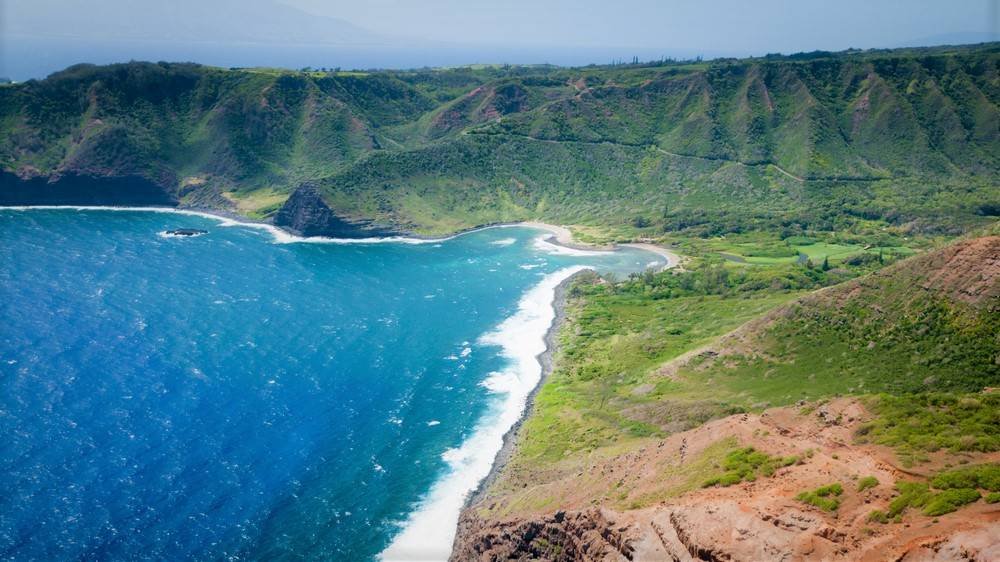
Molokai is a Hawaiian island like no other. It’s an unspoiled paradise and the least developed of all the main islands, making it one of Hawaii’s best-kept secrets.
The island is the fifth most populated of the eight major Hawaiian Islands. Molokai measures 38 by 10 miles, giving it an area of 260 square miles and making it the fifth-largest by size. Located southeast of Oahu and north of Lanai, it boasts an agrarian economy sustained by cattle ranching, pineapple, sugarcane, and small-scale farming. Unfortunately, its tourism infrastructure had to be closed in the early 2000s.
Kalawao County on the north coast has existed since 1866 and operated as a quarantine area for those suffering from leprosy until 1969. It is now preserved as the Kalaupapa National Historical Park. For history buffs, the park allows visitors to learn about Father Damien’s work among Hawaiians with leprosy. In addition, travelers can take an unforgettable mule ride down 1,700 feet into the valley – a must-do experience!
The island is centrally located in the archipelago, and from the shores of Molokai, you can see other Hawaiian islands. Oahu is visible to the west, Lanai from the south, and Maui from the south and eastern shores.
For those more inclined to explore nature, there are plenty of activities, such as hiking trails in Halawa Valley, snorkeling at Hanauma Bay, or sightseeing adventures around Waimea Canyon. Adventure or relaxation, Molokai is a hidden gem that may become your favorite destination in Hawaii.
Lanai
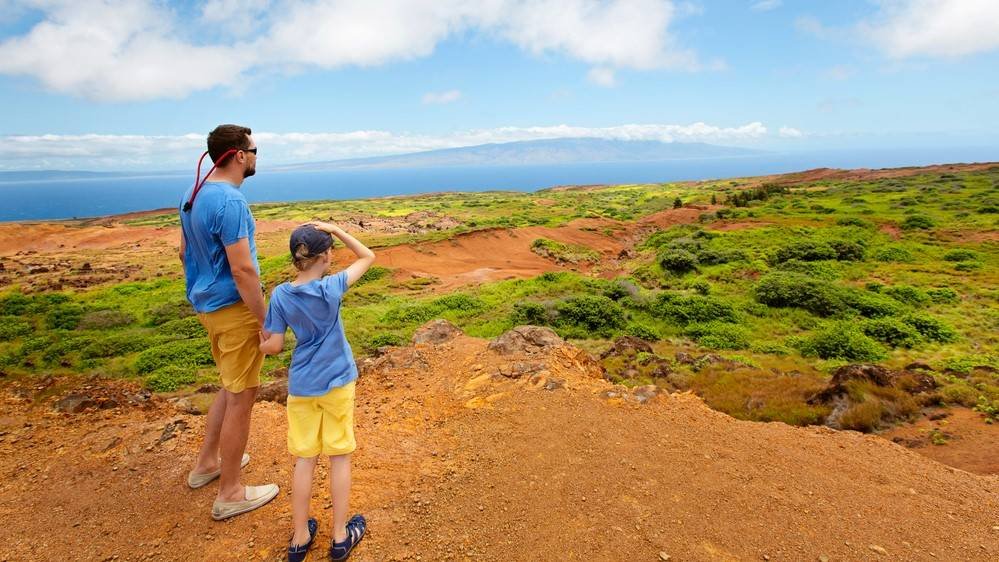
Lanai is a magical place that entices the adventurous traveler. It’s like stepping into another world, an island of beauty and serenity.
Lanai is the sixth-largest Hawaiian Island, covering 140.5 square miles or 364 square kilometers. Its longest direction measures 18 miles or 29 km, and it is separated from Molokai and Maui by channels.
As of 2020, Lanai’s population is 3,367 people, slightly increasing from the 3,193 reported in 2000 and 3,131 in 2010.
The island offers its residents various services, including one school for K-12 students, one hospital with 24 beds, and a community health center.
Fun fact: Lanai doesn’t have traffic lights!
For those looking for activities, there are plenty of options here. Whether you’re up for exploring ancient ruins or snorkeling in crystal-clear waters, this island offers it all. If golfing is your thing, head over to one of the three championship courses on Lanai — The Challenge at Manele Bay and The Experience at Koele. There are also numerous hiking trails throughout the island, so pack some sturdy shoes!
When it comes to sights, there’s no shortage of them either. Drive around the island and take in views from Puu Pehe (Sweetheart Rock), marvel at Garden of Gods’ rock formations, or make your way up Munro Trail – an old jeep track that leads to breathtaking panoramic views of Lanai’s rocky plateau. For luxury travelers, Lanai boasts several high-end resorts, such as Four Seasons Resort Lanai at Manele Bay and Four Season Resorts Lodge At Koele. These offer everything from fine dining restaurants to private beach access — perfect for unwinding after a hectic day out sightseeing!
Foodies can find plenty of delicious local fare in Lanai too. Sample fresh seafood dishes like poke or try traditional Hawaiian favorites like kalua pork & poi. Plus, don’t forget about dessert! Coconut haupia pie and lilikoi chiffon cake will satisfy any food lover. And let’s not forget about the gorgeous beaches: Hulopo’e Beach Park features white sand stretching along the shoreline; Shipwreck Beach offers dramatic backdrops, while Polihua Beach provides tranquil settings with pristine shores – perfect for sunbathing and swimming!
Lanai is truly a paradise with its stunning natural beauty and many activities. Add this little gem to your bucket list.
Niihau

Niihau, the seventh largest island of Hawaii, is known for its isolated and unique lifestyle. Referred to as “The Forbidden Island” for its privacy, Niihau doesn’t offer anything to visitors since it is not open to the public. The only people who can go there are those invited by the residents.
The island is the seventeenth largest in Hawaii, 69.5 square miles or 180 square kilometers, and located 17.5 miles or 28.2 km southwest of Kauai.
Here’s a fascinating chapter in Hawaiian history: the island of Niihau was purchased by Elizabeth Sinclair in 1864 and today remains under the private ownership of the Robinson family. During WW2, the island was the site of the famous Niihau incident, in which a Japanese pilot crash-landed and was helped by the locals.
In 2000, the population of Niihau was 160, which grew to 170 by 2010 but dropped to 84 by 2020. Niihau’s economy is unavailable to outsiders, but the residents have previously arranged activities, tours, and hunting safaris for private clients and tourists. The primary language of Niihau is Hawaiian, and there is also some lei pupu (shell lei) craftsmanship on the island.
Captain Cook first discovered Niihau in 1778. Although privately owned since 1864, it remains culturally significant to Hawaiians today – many locals are still fluent in their native language, Niʻihau-language.
Kahoolawe

Hawaii’s eighth main island is Kahoolawe. This small island, located off the south coast of Maui, is 11 km long and 9.7 km wide, covers an area of 44 square miles, and has a population of zero, as there are no permanent residents on the island. It was first settled by native Hawaiians in ancient times but abandoned after western contact when it became a refuge for runaway slaves and criminals.
Kahoolawe has a long history of use as a training ground and bombing range during World War II and was transferred to the jurisdiction of the state of Hawaii in 1994, and the Kahoolawe Island Reserve was established. Today, the island can only be used for native Hawaiian cultural, spiritual, and subsistence purposes.
The island is characterized by its low elevation and the rain shadow of Haleakala. The terrain is quite dry here, with an annual rainfall of less than 65 cm. Its rugged terrain consists primarily of volcanic rock with little vegetation making it unsuitable for human habitation; however, this same geography makes it ideal for wildlife such as sea turtles, monk seals, sea birds, and humpback whales.
The waters surrounding Kahoolawe are also rich with marine life, including reef fish, coral reefs, sponges, and mollusks, providing essential habitats for many species.
In recent years Kahoolawe has become more well-known due to efforts made by native Hawaiians to restore their ancestral homeland. After being used as a bombing range by the U.S. military during World War II until 1990, environmental groups have worked hard to clean up and protect the island from further damage while preserving its cultural heritage. As part of this effort, they’ve established two protected areas around both sides of the island, encompassing over 200 acres each. Visitors can observe native plants and animals in their natural environment, free from disturbance or exploitation.
Today Kahoolawe stands testament to what can be achieved through determination and perseverance when people come together with a common goal. Thanks to decades of hard work on behalf of dedicated individuals, we now have access to an incredibly unique piece of Hawaiian history that would otherwise remain hidden beneath layers of debris caused by man-made destruction.
Frequently Asked Questions
What Is The Best Time Of Year To Visit Hawaii?
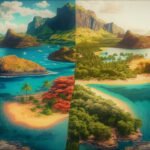
When is the best time to visit Hawaii? The sunny summer days in Hawaii bring balmy temperatures of 85°F, with higher humidity levels, making it the perfect time to take advantage of the many outdoor activities available.
In the winter, temperatures drop to cooler levels, with less precipitation. It’s a great time to enjoy sightseeing and strolls around the islands.
What Are The Most Popular Activities For Tourists In Hawaii?

Hawaii is ideal for those eager to explore the great outdoors and witness breathtaking sights. Here are some of the most popular activities and destinations to check out in this paradise:
• Take a hike in Waimea Canyon and explore the vibrant landscape
• Go snorkeling around Hanauma Bay and marvel at the vibrant sea life
• Catch some waves at the North Shore and experience the thrill of surfing
• Go whale watching off Kauai’s coast and witness the majestic creatures
• Take a volcano tour around Hawai’i Volcanoes National Park and discover the breathtaking beauty of nature
• Enjoy some fun water sports at Honolua Bay and Sunset Beach
• Embark on an adventure and explore all 8 main islands
• Camp under the stars in Haleakala National Park and enjoy the beauty of the night sky
• Trek through Mauna Loa Forest Reserve and experience nature in its purest form
• Discover the beauty of Waimea Canyon
• Explore the vibrant underwater world of Hanauma Bay
• Experience the thrill of surfing at the North Shore
• Go whale watching off Kauai’s coast
• Witness the beauty of Hawai’i Volcanoes National Park
• Have some fun at Honolua Bay and Sunset Beach
• Marvel at the night sky in Haleakala National Park
• Trek through Mauna Loa Forest Reserve
What Is The Average Temperature In Hawaii?
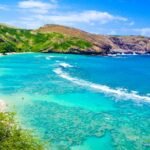
Hawaii is ideal for those looking to escape the cold winter months and enjoy warmer temperatures.
The average yearly temperature in Hawaii is a pleasant 75°F (24°C), with day temperatures ranging from 71-81°F (22-27°C) and night temperatures from 65-74°F (18-24°C). The water temperature remains comfortable at 79-81°F (26-27°C).
The humidity levels in Hawaii range between 55%-80%.
The weather in Hawaii is quite remarkable; expect plenty of sunshine with clear blue skies and gentle breezes from the ocean waves. The consistent warmth and cool sea air make it an ideal destination for any traveler.
What Is The Cost Of Accommodation In Hawaii?
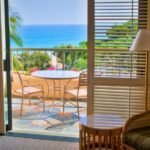
Hotels and resorts are expensive in Hawaii, and the average three-star hotel costs $350 per night, whereas a four-start resort costs $455. A bed-and-breakfast accommodation costs $190; the statewide average is $375 per night for a room.
Indulge in the abundance of a 5-star resort or opt for a more economical option – the choice is yours! Prices fluctuate depending on the season and availability, and beachfront condos tend to be pricier.
Do your due diligence and compare rates across various websites. Be flexible with the dates of your stay, and you can save some cash. Don’t forget to check out the reviews and special deals available.
Is There Public Transportation Available Between Islands?

Are you searching for a way to explore the eight main islands of Hawaii? The good news is that many public transport options are available.
Fly and explore Hawaii at an affordable price! Book your ticket early, and you could save even more.
Taking a ferry is another great option for seeing the islands in all their glory. Enjoy the views and the relaxed atmosphere that only sailing can bring.
Lastly, hop on a bus and get around the cities and towns cost-effectively. Depending on the type of bus, it may make stops along tourist hot spots so you can experience some of the most popular tourist attractions.
Conclusion: Hawaii’s main islands
Hawaii is truly a unique and special place, offering something for everyone. With its eight main islands, crystal-clear water, sublime beauty, and culture filled with aloha, Hawaii is sure to make a lasting impression like no other place. Summertime is ideal for warmth and sunshine, while winter offers popular outdoor activities. An array of accommodation options are available, varying in cost and ranging from budget to luxury. Public transportation is also available. Experience all that Hawaii offers and make memories to last a lifetime.

